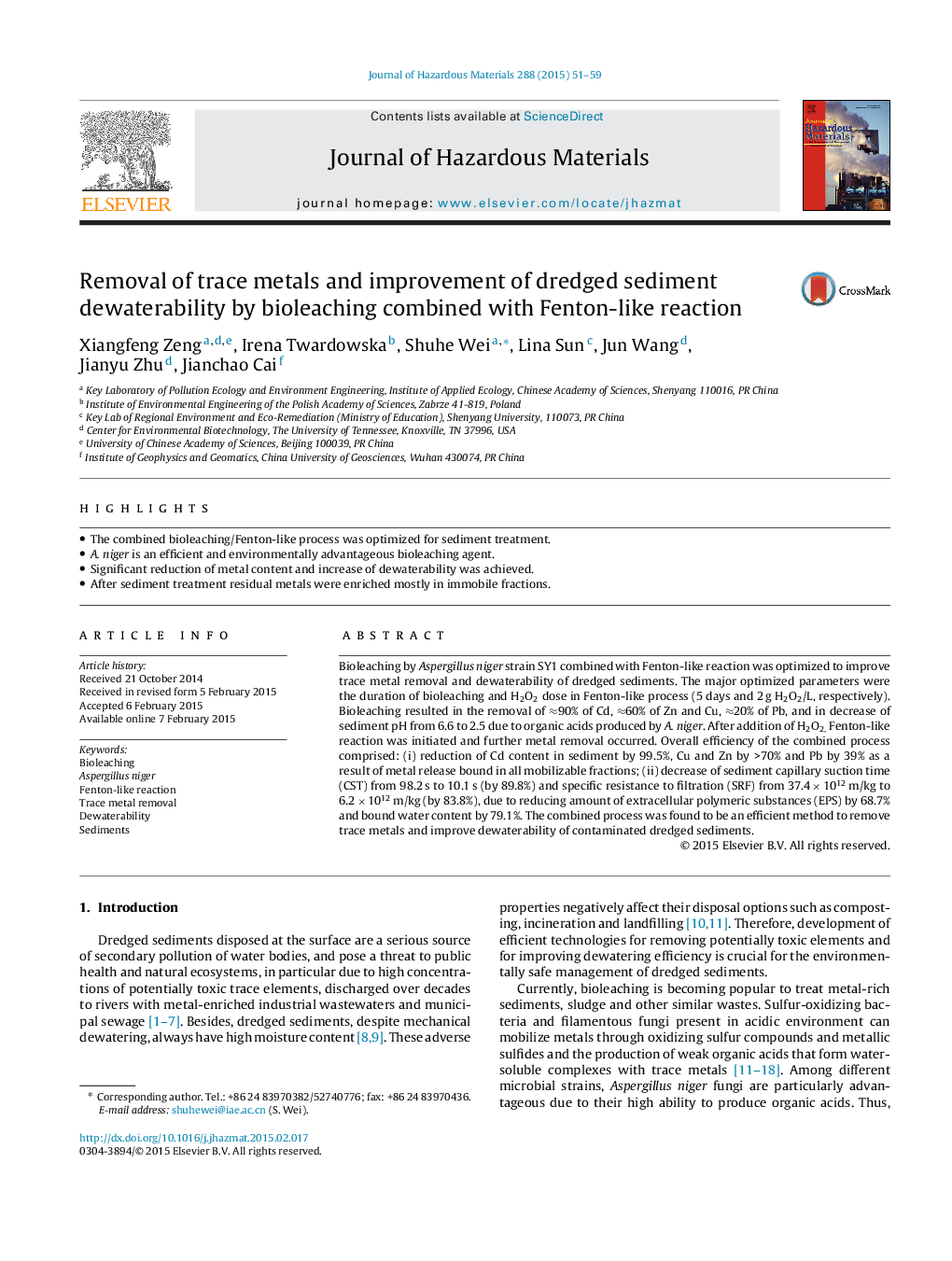| Article ID | Journal | Published Year | Pages | File Type |
|---|---|---|---|---|
| 576090 | Journal of Hazardous Materials | 2015 | 9 Pages |
Abstract
Bioleaching by Aspergillus niger strain SY1 combined with Fenton-like reaction was optimized to improve trace metal removal and dewaterability of dredged sediments. The major optimized parameters were the duration of bioleaching and H2O2 dose in Fenton-like process (5 days and 2Â g H2O2/L, respectively). Bioleaching resulted in the removal of â90% of Cd, â60% of Zn and Cu, â20% of Pb, and in decrease of sediment pH from 6.6 to 2.5 due to organic acids produced by A. niger. After addition of H2O2, Fenton-like reaction was initiated and further metal removal occurred. Overall efficiency of the combined process comprised: (i) reduction of Cd content in sediment by 99.5%, Cu and Zn by >70% and Pb by 39% as a result of metal release bound in all mobilizable fractions; (ii) decrease of sediment capillary suction time (CST) from 98.2Â s to 10.1Â s (by 89.8%) and specific resistance to filtration (SRF) from 37.4Â ÃÂ 1012Â m/kg to 6.2Â ÃÂ 1012Â m/kg (by 83.8%), due to reducing amount of extracellular polymeric substances (EPS) by 68.7% and bound water content by 79.1%. The combined process was found to be an efficient method to remove trace metals and improve dewaterability of contaminated dredged sediments.
Related Topics
Physical Sciences and Engineering
Chemical Engineering
Chemical Health and Safety
Authors
Xiangfeng Zeng, Irena Twardowska, Shuhe Wei, Lina Sun, Jun Wang, Jianyu Zhu, Jianchao Cai,
